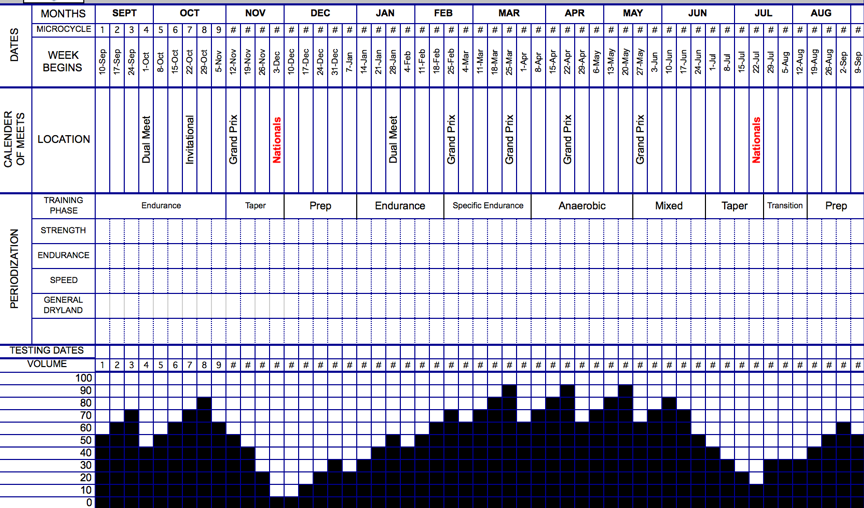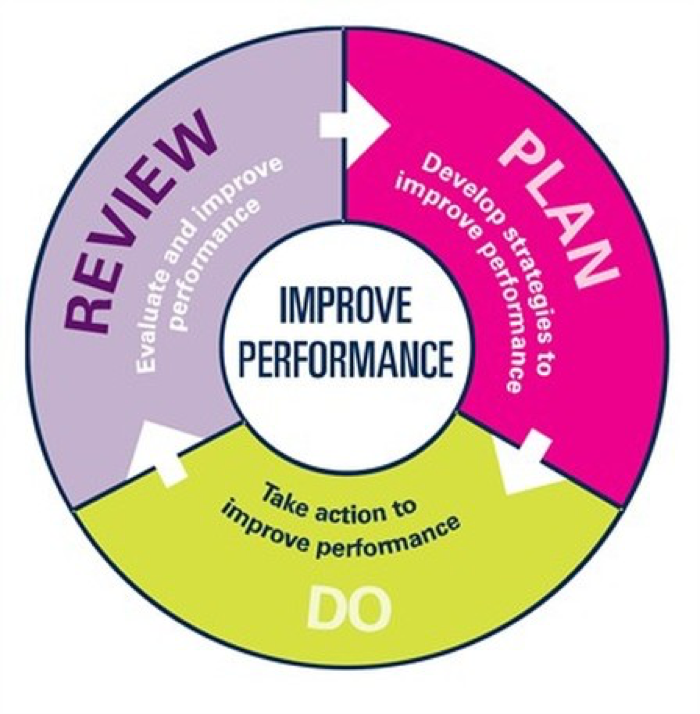How to be successful a year from now – applying the agile periodization concept
Why writing a training plan 3 month in advance is never good practice
Periodization is one of the most debated topics in sport science literature. In theory, getting an athlete’s periodization right is the difference between performing well, or bombing out at major competitions. Despite this perceived importance, there are as many periodization schemes in circulation as there are former soviet-bloc sport science gurus, and no clear consensus has been reached by the strength and conditioning community as to what method is superior.
Periodization has been defined as the purposeful sequencing of different training units (long-duration, medium-duration, and short-term training cycles and sessions) so that athletes can attain the desired state and planned results1. The innate assumption in this definition is that performance on a particular date at a particular time in the future can be planned. Basically, if you do ‘x’ now, ‘y’ then, and ‘z’ after that, you will achieve ‘q’ on this day in the future. The premise is that within long-term training programs, cause and effect are related and therefore performance can be predicted based on the training that an athlete has done. Based on this view coaches write extremely long and detailed training plans (for example see Figure 1 below), with the aim of causing an athlete to ‘peak’ at a point in the future.

Figure 1 – Year long periodized training program for a hypothetical swimmer.
The idea that we can plan well, and ensure future performance is appealing for coaches, but inevitably WRONG! Figure 2 illustrates what we typically see in training studies when we give different individual the same training program – everyone reacts differently! The example provided here is for aerobic fitness, but could just as well be speed, strength or any other performance measure you are interested in.

Figure 2 – Individual courses of changes in maximum oxygen uptake. A: pre- and post-intervention assessment only. B: with additional assessments during the intervention period. Reproduced from Hecksteden et al. (2015)2
Acolytes of the periodization methods would have us believe that even these variable performances can be predicted if you have enough data and you are enough of an expert. This view sees periodization as a complicated rather than a complex process (Figure 3)3. Complicated processes can be likened to sending a rocket to the moon – the process is exceptionally complicated, but high levels of expertise in a variety of fields can ensure success. This is because all rockets are essentially similar in how they work, and therefore with sufficient study the processes can be clearly understood. On the other hand complex processes can be likened to child raising – there is no clear formula for success. Expertise can contribute, but is neither necessary nor sufficient to ensure success. This is because every child is unique, even twins raised in the same household often have very different personalities.

Figure 3 – Explanation of simple, complicated and complex processes (Glouberman and Zimmerman, 2002)
Prescribing training to improve performance is clearly a complex process. We can not hope to predict what an athlete will eat, how well they will sleep, whether their training will be effected by exam stress, whether they will become ill, break up with a boyfriend, be injured in a car accident etc., and as such we can’t predict the outcomes of a training program. Anyone who tells you they can is a verifiable ‘broscience’ practitioner.

So, what does a diligent strength and conditioning coach do. If it’s impossible to predict the outcomes of a training plan, should we not bother planning at all? As discussed before, when working within complex systems, expertise is helpful, but no guarantee of success. Therefore, we should use our expertise to plan as well as possible, but allow for the fact that the outcomes are uncertain. For example, we can be relatively sure that for most people if they start lifting weights they will get stronger, but exactly how strong and in what timeframe is impossible to say.
If we accept that we are uncertain about how athletes will progress in our training plans, it makes sense not to plan a year at a time (at least not with too much detail), and instead to plan in small training blocks and continuously assess progress as a result of the training. If the athlete progresses as expected/hoped, that is a good indication that for that athlete, at that point in time, you are providing an effective training program. If the training outcome is unexpected, you can change method before investing time and energy in an approach that won’t be successful for that individual. This Plan-Do-Review cycle is key to designing sensitive and responsive training programs that are effective for each individual athlete.

References 1. Issurin, V.B., 2010. New horizons for the methodology and physiology of training periodization. Sports medicine, 40(3), pp.189-206. 2. Hecksteden, A., Kraushaar, J., Scharhag-Rosenberger, F., Theisen, D., Senn, S. and Meyer, T., 2015. Individual response to exercise training-a statistical perspective. Journal of Applied Physiology, 118(12), pp.1450-1459. 3. Glouberman, S. and Zimmerman, B., 2002. Complicated and complex systems: what would successful reform of Medicare look like?. Romanow Papers, 2, pp.21-53.